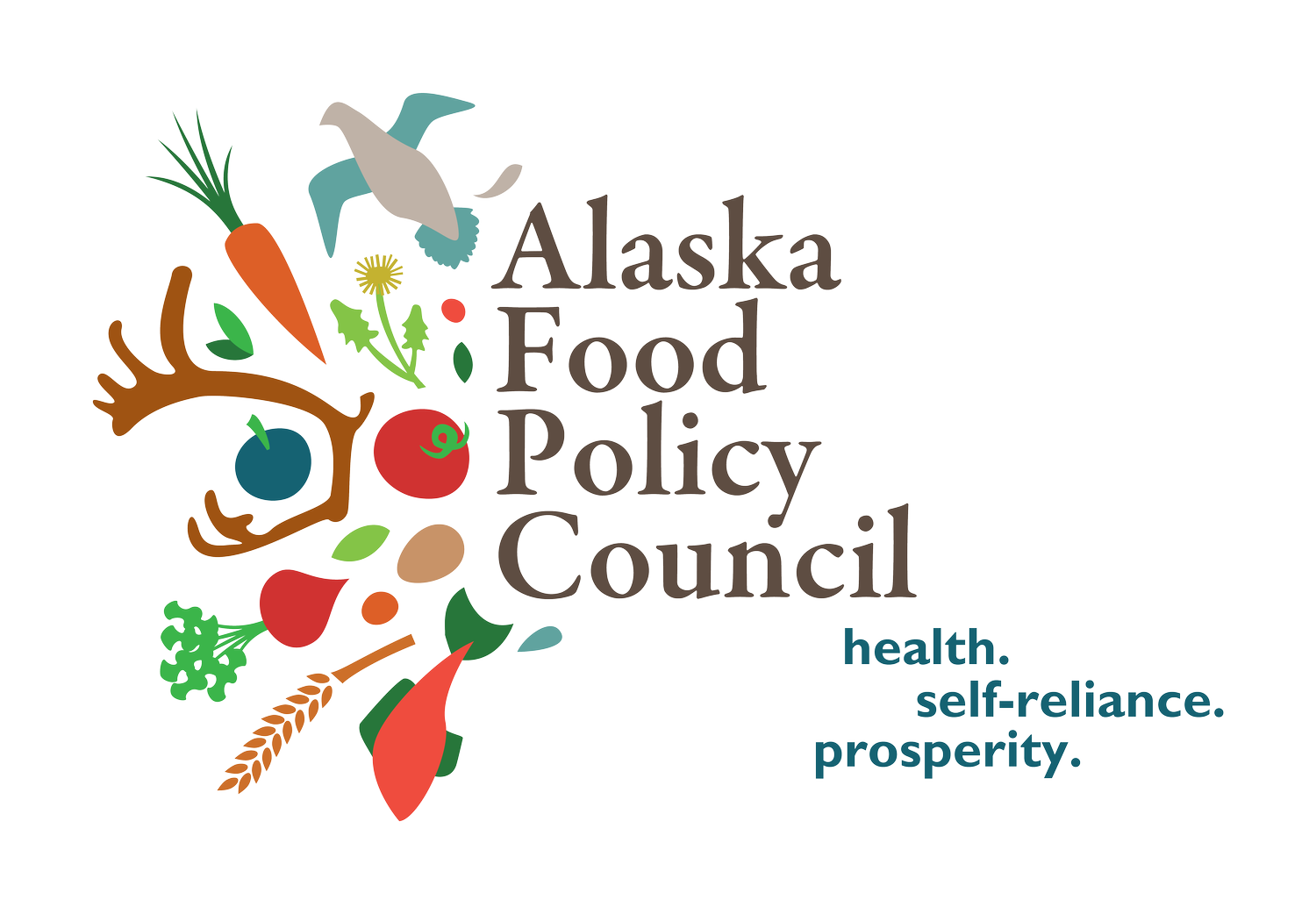Read the AFPC’s letter to Governor Bill Walker, and then send him your own letter with ideas for how to improve Alaska’s food system!
Dear Governor Walker,
The Alaska Food Policy Council is a group of Alaskans who believe that food security is key to a healthy, self-reliant and prosperous Alaskan future. We know that you share our concerns, and we are writing to suggest a few policy proposals that could have a big impact on our state’s food system.
We understand that the state faces fiscal challenges and the ideas we suggest here do not require much new spending. Over time, support for these ten initiatives will improve our economy by keeping more of the over $2 billion Alaskans spend on food each year within the state and reducing the cost of healthcare by increasing access to healthy, local food.
We want to let you know what our board recommends, but we think you should hear from our members around the state as well. With that in mind, we are asking them to write to you directly and let you know which of these ideas they support the most, and offer suggestions of their own about how we can improve our food system.
Establish a sub-cabinet on food security. Food security involves complex issues that cross the domains of many different state agencies. In 2011, Governor Parnell established the Alaska Food Resources Working Group, and although the group technically still exists, it has not met during your administration. Bring agency heads together to coordinate their response to food-related issues.
Keep funding for agricultural research and technical support. Alaska is a unique and sometimes difficult place to farm, but the Division of Agriculture and the University of Alaska Fairbanks agricultural programs provide great resources to those up to the challenge. Preserve their funding to protect our food supply and help new growers expand our ability to feed ourselves.
Encourage state agencies to buy more Alaska Grown. A recent audit by the Alaska Division of Legislative Audit showed that state agencies do not buy Alaska Grown products as much as they could. Ask your agencies to follow the five recommendations in the DLA report and you will support Alaska farmers while keeping our money in the state’s economy.
Open state-owned agricultural land to innovative local food producers. Provide small farmers and ranchers with access to suitable land that is close to a customer base and transportation (like the Nenana-Totchaket region) and you will spur production and economic development. [For more on this, check out pages 26-27 of Building Food Security in Alaska.]
Support food storage infrastructure in rural communities. Many communities are vulnerable to emergency food shortages because they do not have space to store reserves. Many of our farmers could produce more food but have no place to store it in winter. By investing in food infrastructure, you can make our communities safer and more self-reliant. [Take a look at the AFPC’s Town Hall Reports for more community input.]
Restore state support for Farm to School programs. Programs that bring Alaska Grown products into our schools, like the Farm to School program and the Nutritional Alaskan Foods in Schools Program (NAFS), went unfunded in last year’s budget but remain popular. Bring funding for Farm to School back and you support a balanced approach to food system change by developing a reliable market for Alaska Grown, educating the next generation of producers, consumers and leaders, and making a positive environmental impact.
Develop a strategy to increase Alaska’s livestock production. Alaskan farmers raise cattle, reindeer, musk oxen, bison, and pork, yet it is difficult to purchase Alaska Grown meats in stores. Alaska has only three certified slaughterhouses, one of which (the Mt. McKinley Meat & Sausage Company) may soon be forced to close. Build infrastructure that supports Alaska’s ranchers and meat producers and you will protect and increase Alaska’s food security while growing an important sector of our food system.
Provide SNAP incentives to encourage participants to buy fresh, healthy and local produce. Food is expensive in Alaska and families that rely on food stamps sometimes must choose less healthy foods to have enough to feed their kids. By helping SNAP participants buy more at farmer’s markets you can improve the health of our most vulnerable citizens while supporting local food producers. [Between 2011 and 2014, farmer’s market revenue from SNAP-related benefits rose from $13,291 to $139,217, due largely to the Alaska Farmers Market-Quest Program.]
Encourage schools, hospitals, long term care facilities, and other institutions to serve traditional Native foods, when appropriate. Honor the deep cultural significance that food can have and you will improve the health and well-being of Alaska Native peoples.
Make sure that the Food Safety & Sanitation Program has sufficient resources to keep our food safe. Alaskans count on the state to collaborate with our food businesses, as well as institutions like hospital cafeterias and schools, to ensure our food is prepared and served safely, but according to State data less than half of food businesses are inspected per year. Be a champion for funding this essential government service and you will keep Alaskans healthy and safe.
As you approach the end of your first year in office, we hope you will make increased food security an important part of your administration’s legacy in Alaska. Please contact us if there is anything we can do to help you with your efforts.
Sincerely,
Victoria Briggs & Elizabeth Hodges Snyder, Co-Chairs
Alaska Food Policy Council




















